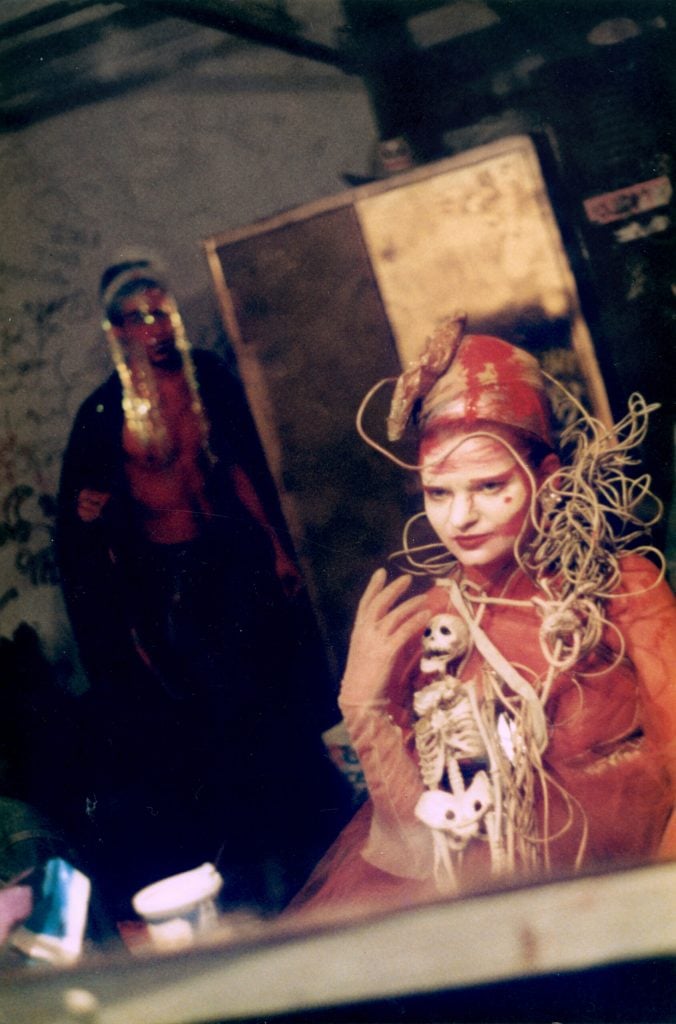Late every Monday night for three years, beginning in June 1992, the now-defunct Pyramid Club on New York City’s Avenue A hosted a new play.
Or maybe “play” is too slight, too confining a word—these were theatrical happenings that threw together hysterical drag, punk, soap opera, pathos, song, and gore in ways that refused banal description. One night, you might catch an absurdist adaptation of The Scarlet Letter bookended by a cover of disco staple “You Keep Me Hangin’ On”; on another, a sci-fi spectacle where the costumes were built with metal refuse and bound with black electrical tape. The entire series was a chameleonic (maybe even shambolic) affair; its only constant was its ensemble.

Anohni as Fiona Blue. Photo: Megan Green.
The late-night series was masterminded by a collective called the Blacklips Performance Cult, formed by artists Anohni, Johanna Constantine, and Psychotic Eve, who were joined by a 13 to 20-strong troupe of drag queens, performers, writers, and nightlife veterans. The group never courted publicity (nor did it receive any); instead, over 120 original plays, sustained a singular world by and for themselves.
“We got together each week to enact these plays that we would write, and we performed primarily for each other,” Anohni told Artnet News. “There was a strong component of this which involved witnessing each other… Seeing each other’s dreams, potential, humor, beauty, even suffering. We did it for ourselves and it was really an inside job. We kept it that way until this moment.”
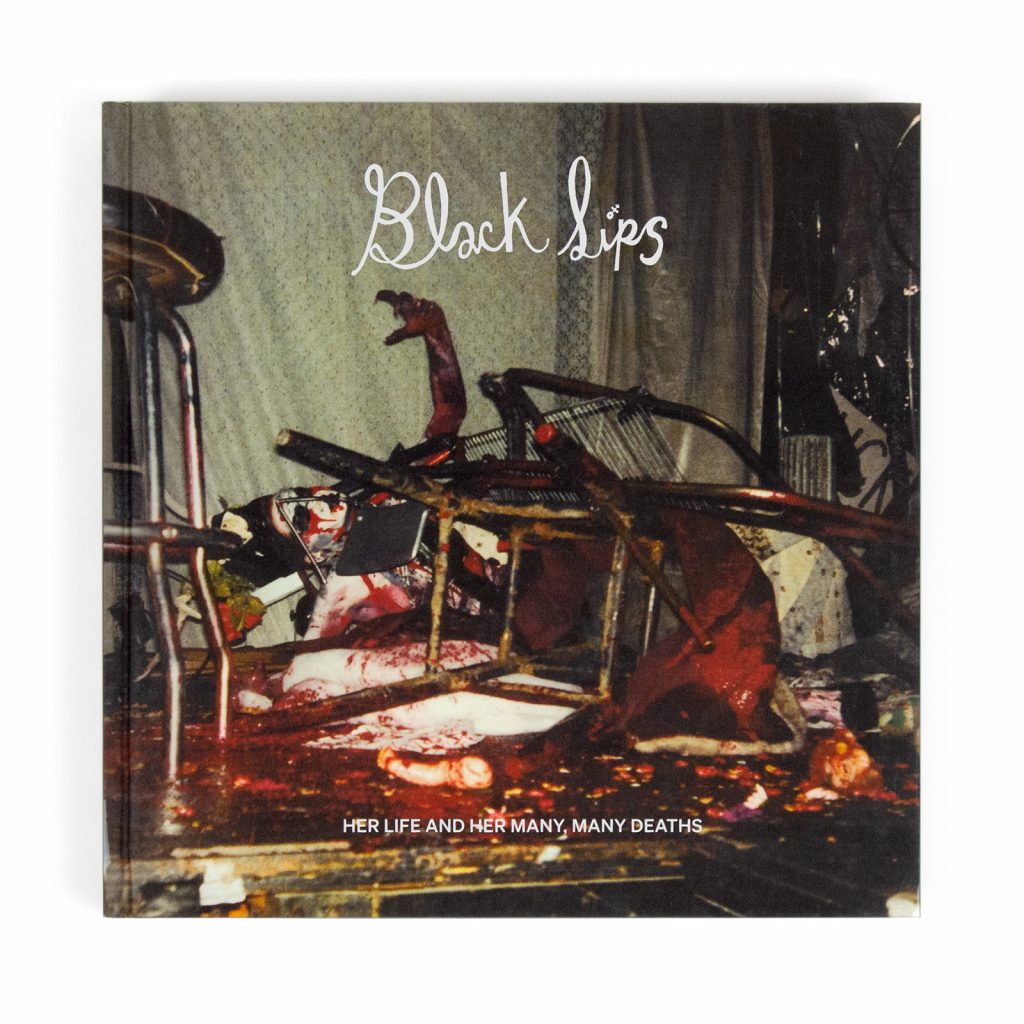
Front cover of Blacklips: Her Life and Her Many, Many Deaths. Photo courtesy of Anthology Editions.
This moment sees the release of Blacklips: Her Life and Her Many, Many Deaths, a hardcover (with an accompanying soundtrack) compiled by Anohni and performance artist Marti Wilkerson that documents the troupe’s footprint. Its 471 pages assemble scripts, photographs, lyrics, flyers, diary entries, video stills, and other ephemera—a full-color, full-bleed visual feast that recreates the visceral experience of a Blacklips play.
For Anohni and Wilkerson, pulling together the volume was itself a three-year journey—“an odyssey” for Anohni, “like excavating a ruin” for Wilkerson—whose moment was due.
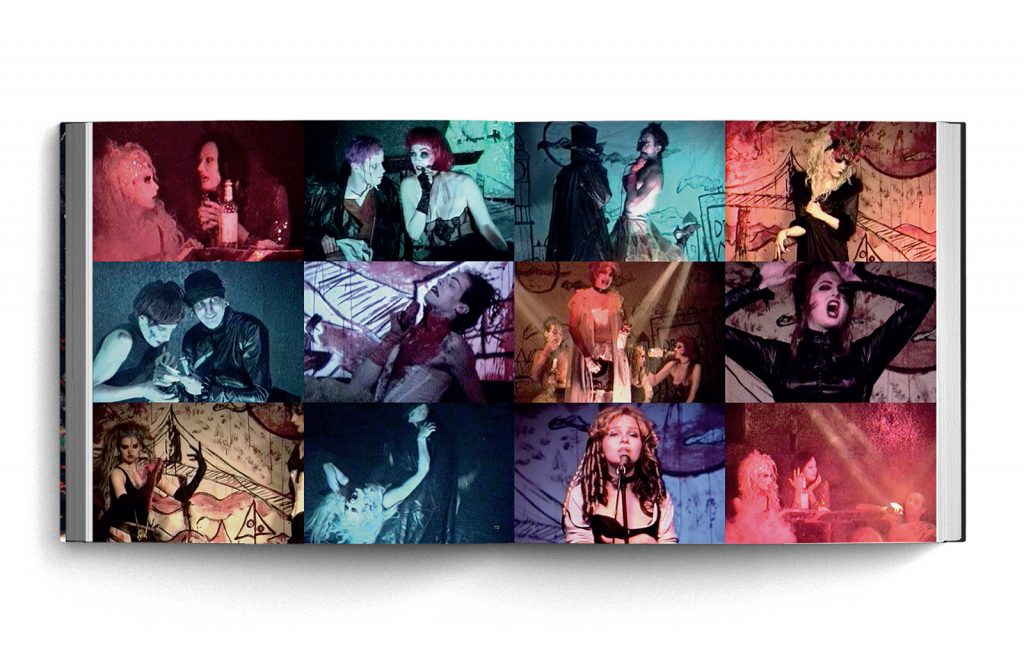
Inside Blacklips: Her Life and Her Many, Many Deaths. Photo courtesy of Anthology Editions.
“It felt like time to make the effort; there was a need to represent the group before more of us joined The Away Team,” Wilkerson, also a Blacklips member, told Artnet News. “The idea of self-authorship was an opportunity. Almost every element of the book is directly from the Blacklips members themselves; most of the non-essay text is in our own handwriting or from the scripts we typed.”
She added: “All the physicality and rigor of the group are on display. We rejected explanations.”
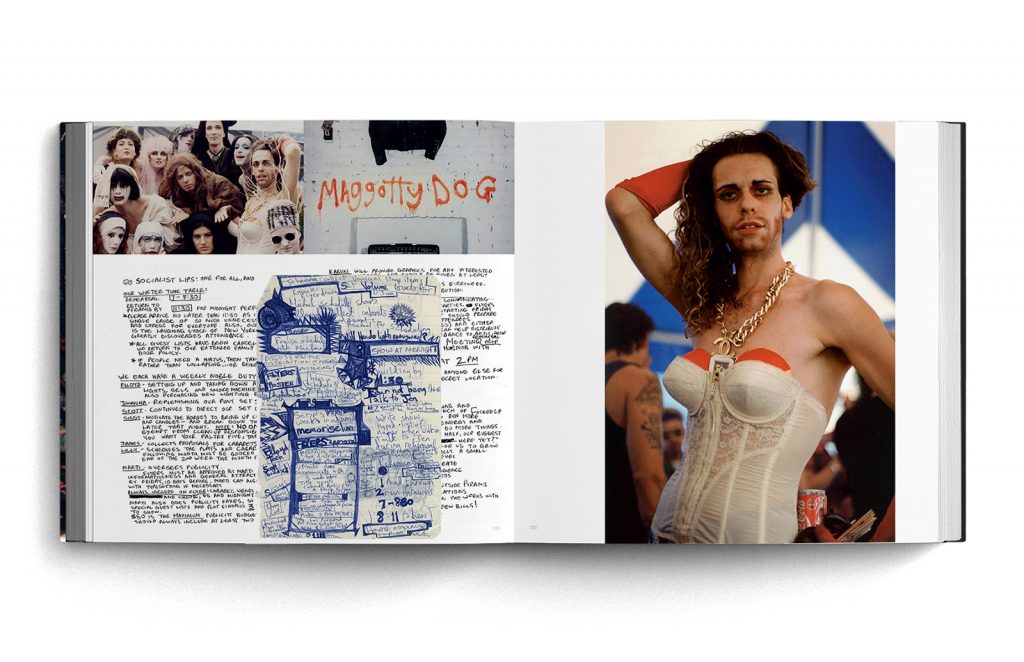
Inside of Blacklips: Her Life and Her Many, Many Deaths. Photo courtesy of Anthology Editions.
In fact, the book’s only concession to exposition is in its pair of introductory essays by Lia Gangitano and Benjamin Titera, with contributions from Blacklips alumni. The texts background the group’s emergence in a city that failed to address the AIDS crisis, in a nation that silenced its queer citizens (transgender activist Marsha P. Johnson was found dead on a street on July 6, 1992)—thus Blacklips’s birth, Titera wrote, “within a milieu of collapse and destruction.”
That the collective should respond to such a landscape with experimental theater served as equal catharsis and critique—a defiantly creative gesture by “post-everything gender mutants,” per Anohni, in the face of a culture of cis-sexism.
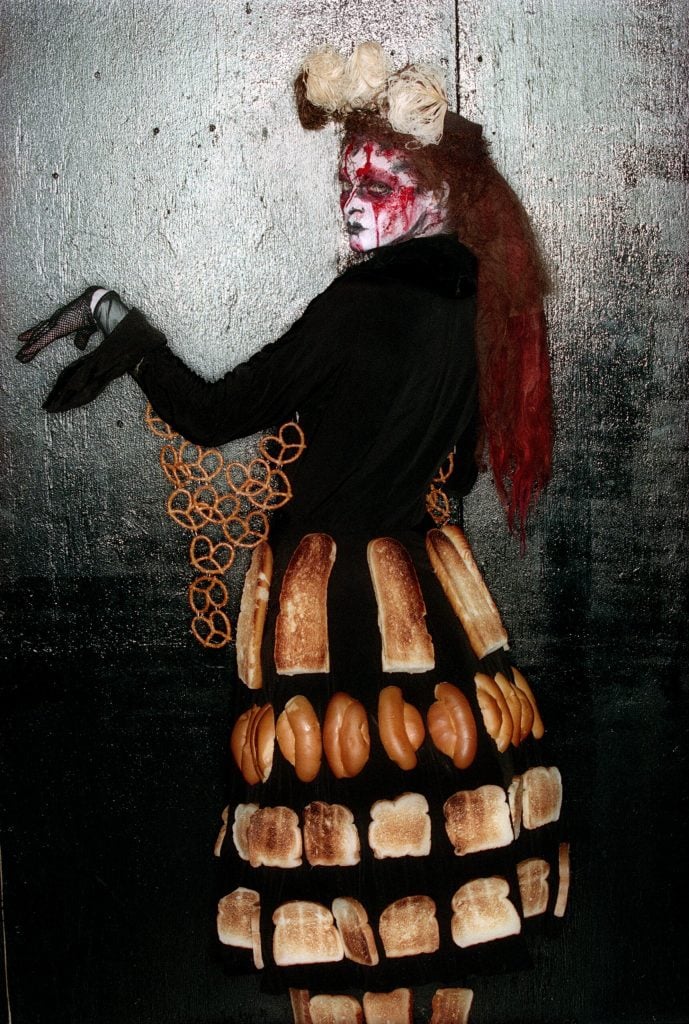
Johanna Constantine. Photo: Paul Brissman.
Constantine’s World of Monsters, for one, bottled a “rage against a bleak future,” unfolding amid a dystopian civilization peopled by “demonic characters struggling to maintain the world’s quotas of suffering.” Anohni’s reimagining of The Scarlet Letter refashioned Hawthorne’s indictment of puritanism to lampoon 20th-century Christian America, complete with the chorus: “In the eyes of your trouser snake, We Are All Hester Prynne!”
“It had a strangely glamorous, anything goes, no-limits quality,” Wilkerson recalled of Blacklips’s run. “It was almost like the Pyramid itself was a siren luring and beckoning to all kinds of adventurous people.”
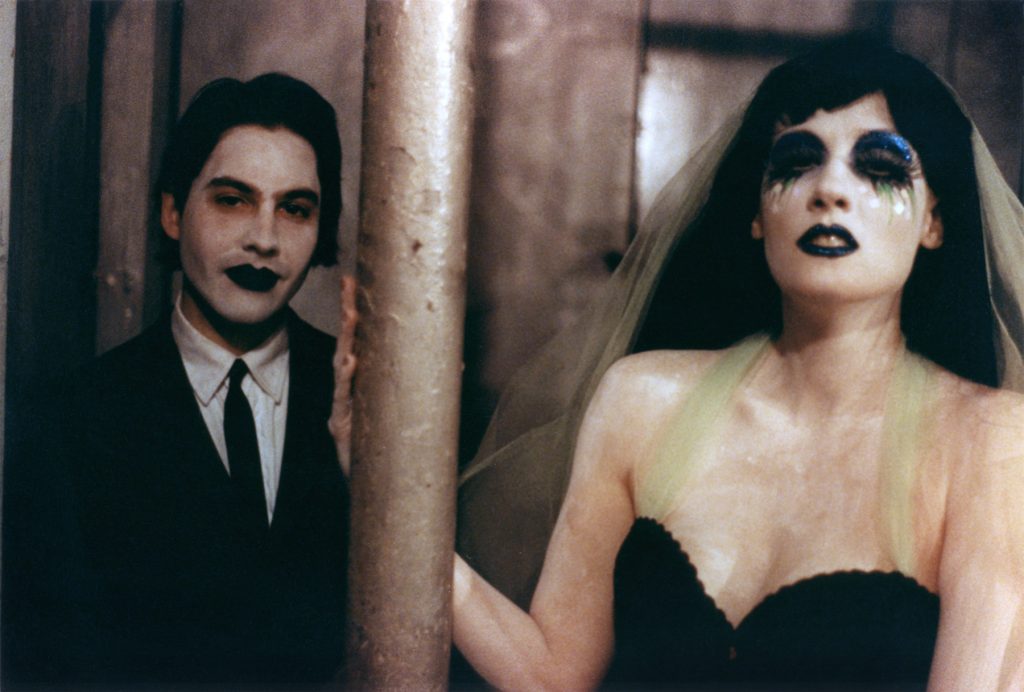
Twinkle and Love Forever. Photo: Anohni.
Indeed, Blacklips was personal for its creatives, particularly as a number of plays were poignantly autobiographical. The recollections gathered in the book say as much (Sissy Fitt: “Sometimes I feel like my life ended in 1995”); Anohni herself reflected on “an energetic and densely creative period for a group of us in Manhattan.”
“Making the book, especially sitting with the primary materials in this way,” she said, “changed my sense of what Blacklips was.”
Considering the personal and fringe nature of the project, it’s easy to classify Blacklips as a subcultural concern, or in Wilkerson’s words, “This group was super obscure.” But just as the collective operated in the niche carved by Klaus Nomi, John Waters, Jack Smith, and Candy Darling, so too did it expand the space for radical queer expression—and very likely, is still doing so.
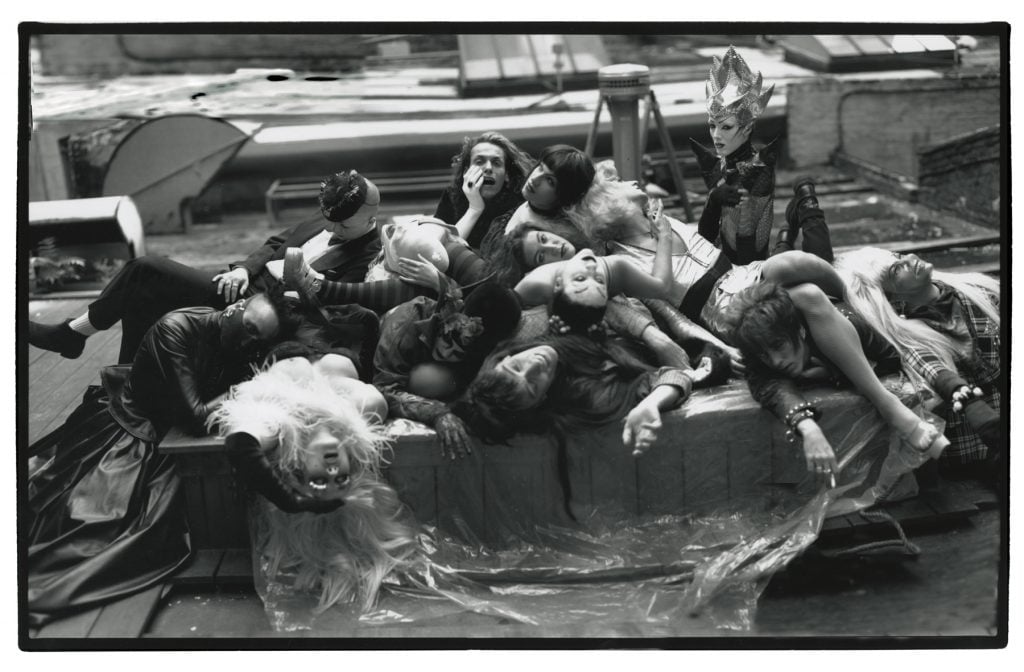
Blacklips. Photo: Michael James O’Brien.
Anohni doesn’t see the publication of Blacklips as putting a full-stop on the troupe. She pointed out that its members, such as Lambert Moss, Kabuki Starshine, Michael Cavadias, and Constantine, continue to create (as has Anohni herself), ensuring Blacklips’s legacy remains “a living thing, in a process of becoming.”
And if nothing else, she added, “I’m sure we occupy some tiny dank corner in the grand scheme of things.”
“Maybe with the book and record coming out,” Wilkerson countered, “we will find some place drier.”
Blacklips: Her Life and Her Many, Many Deaths is available on Anthology Editions.
